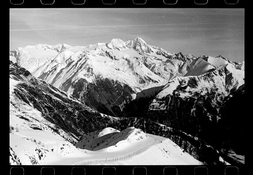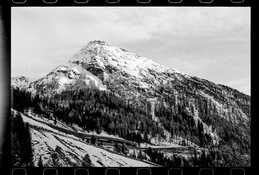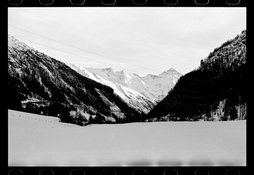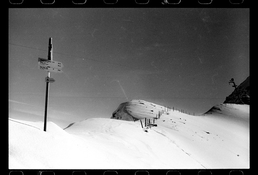No. I have previously checked my digital Nikon against my film Nikons and the light readings displayed in the viewfinder were identical when metering the same scene.Is middle gray from a digital standpoint different than from a film standpoint, meaning not the same as an 18% gray, somewhat less than 18%. Seems I've read that somewhere before, maybe I dreamt it.
You are using an out of date browser. It may not display this or other websites correctly.
You should upgrade or use an alternative browser.
You should upgrade or use an alternative browser.
Snowy Alpine Scenes: General Thoughts
-
A
- Thread starter Tylaar
- Start date
Recent Classifieds
-
Want to Buy Leica ia
- Started by Jbennett68
-
For Sale Mamiya 7 65mm and 43/50mm lens hoods. Brand new, never used, in box.
- Started by Early Riser
-
For Sale FS: Kodak Series 9 Gelatin Filter Frame Holder for 4" filters
- Started by AnselMortensen
-
For Sale FS: 49mm Hoya 25A Red Filter
- Started by AnselMortensen
-
For Sale FS: A Lith Printer's Dream!
- Started by AnselMortensen
Forum statistics
Vaughn
Subscriber
No. I have previously checked my digital Nikon against my film Nikons and the light readings displayed in the viewfinder were identical when metering the same scene.
That is very suspecious. Light meters that agree??!!! That rattles my reality.
Alan Edward Klein
Member
That is very suspecious. Light meters that agree??!!! That rattles my reality.
What's the expression? When you have two watches, you never know the right time.
DREW WILEY
Member
- Joined
- Jul 14, 2011
- Messages
- 14,575
- Format
- 8x10 Format
Snow isn't a gray card. And most gray cards don't even match (I've tested for that deviance using an industrial quality spectrophotometer). And not all meters are calibrated the same, or even have the same kind of sensors. My Nikon meter does SOMETIMES match my Pentax spotmeter midpoint reading, but is less accuarate overall. A lot depends on what the sensor is actually evaluating, taking into its own view when metering, and how many hoops the light has to jump through getting there, which differs, depending. The less variables, the better; and that's why I prefer the same model handheld spotmeter for everything.
Last edited:
Doremus Scudder
Member
I've been following this thread with interest, since there are so many approaches and compensations mentioned.
Being a Zone System practitioner and using a spot meter to place shadow values, I treat snowy scenes just as I would any other: First visualizing hos I would like the tones in the scene to be rendered in a print and then metering and placing an important shadow (often, I place open shadows in snow scenes in Zone V) and then seeing where everything else falls in order to determine a development time.
Sure, my choices for shadow values and for development schemes may be different than that of other, more "average" scenes, but the approach is identical. Visualizing the values is the key and, for me, the important part of the Zone System.
Best,
Doremus
Being a Zone System practitioner and using a spot meter to place shadow values, I treat snowy scenes just as I would any other: First visualizing hos I would like the tones in the scene to be rendered in a print and then metering and placing an important shadow (often, I place open shadows in snow scenes in Zone V) and then seeing where everything else falls in order to determine a development time.
Sure, my choices for shadow values and for development schemes may be different than that of other, more "average" scenes, but the approach is identical. Visualizing the values is the key and, for me, the important part of the Zone System.
Best,
Doremus
wiltw
Subscriber
Why not use a digital camera and transfer the exposure settings to the film camera.?
If you shoot per the meter, the captured image may well NOT match what your eye and brain see the scene to represent!
For example, I took an incident meter reading of my front yard in the dark of night. The only light falling upon the scene came from a streetlight at the corner of my lot.
Shot 1 is this series is exactly as my meter told me to expose it

Shot 4 in this series is actually how the eye perceives the lighting of the scene.
Alan Edward Klein
Member
If you shoot per the meter, the captured image may well NOT match what your eye and brain see the scene to represent!
For example, I took an incident meter reading of my front yard in the dark of night. The only light falling upon the scene came from a streetlight at the corner of my lot.
Shot 1 is this series is exactly as my meter told me to expose it

Shot 4 in this series is actually how the eye perceives the lighting of the scene.
Did you set your camera not to correct the view on the screen? Otherwise, the camera will try to show the best image even when the exposure setting is off.
wiltw
Subscriber
Did you set your camera not to correct the view on the screen? Otherwise, the camera will try to show the best image even when the exposure setting is off.
I do NOT normally set my camera to show the 'simulated exposure'....I use a dSLR with very little use of LiveView and display on the rear LCD.
The shot series was deliberately record 'as metered' vs. varying degrees of underexposure, to show how the meter wishes to record the scene vs. what the eye sees of that same scene.
Vaughn
Subscriber
And our eyes constantly are changing the 'exposure' onto our retinas (just the aperture, really) to see into the shadows, or to study the brightly lit areas...with the brain doing a little HD action.
Great stuff, Tylaar!!!
Great stuff, Tylaar!!!
Last edited:
DREW WILEY
Member
- Joined
- Jul 14, 2011
- Messages
- 14,575
- Format
- 8x10 Format
The camera doesn't "correct" anything. The whole point is to control the variables yourself using a pertinent metering technique. Yeah, someone might have some silly in-camera "wedding" app suitable for softy-lit snow. But I don't have time to read through a six hundred page Owners Manual for either an automated film or digi SLR. The last time I did that, it was for sake of turning off all that nonsense so direct manual control could be obtained.
No camera has any idea what the "best" image is. What esthetic and compositional taste does any lifeless machine have? I guess if only robots and cyborgs are going to view the final image .... And I sure as hell wouldn't trust some nerd programmer either.
Gosh, I wish people would go out and buy an 8x10 camera and a stack of color film, and then still tell me bracketing is the way to do it. Just how many second mortgages on your house are you willing to take out, anyway? A good light meter is one of the biggest bargains in existence, when it comes to saving unnecessary film expense.
No camera has any idea what the "best" image is. What esthetic and compositional taste does any lifeless machine have? I guess if only robots and cyborgs are going to view the final image .... And I sure as hell wouldn't trust some nerd programmer either.
Gosh, I wish people would go out and buy an 8x10 camera and a stack of color film, and then still tell me bracketing is the way to do it. Just how many second mortgages on your house are you willing to take out, anyway? A good light meter is one of the biggest bargains in existence, when it comes to saving unnecessary film expense.
| Photrio.com contains affiliate links to products. We may receive a commission for purchases made through these links. To read our full affiliate disclosure statement please click Here. |
PHOTRIO PARTNERS EQUALLY FUNDING OUR COMMUNITY:  |








